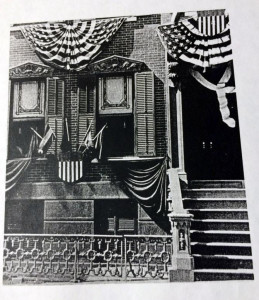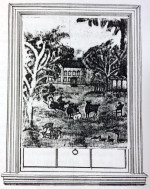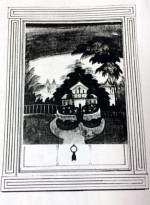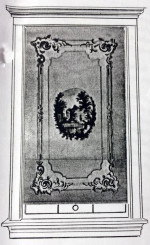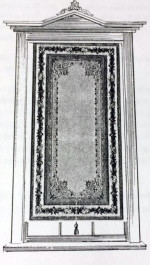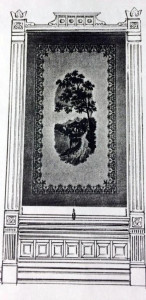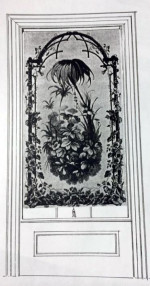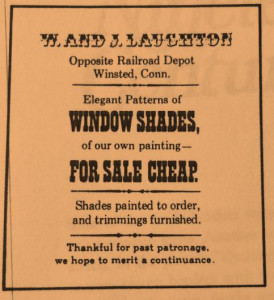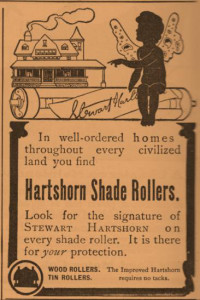A Brief History on the Origins of Window Roller Shades
Window shade history may not be top of your interest list, but its history can provide insight into a larger historical picture.
Window treatments did not appear with the birth of windows; partly because the first known windows were created during ancient times and were simple slits in thick masonry walls that served purely functional purposes of letting in air and light, and allowed inhabitants to see approaching enemies. These first windows could be found in Egyptian, Near East, Greek, and Roman temples, as well as palaces and fortresses. The Middle-Ages changed the significance of windows as cathedrals throughout Europe turned windows into beautiful stained glass works of art. It would be a few hundred years however, before windows would be embellished with shades.
The first shades to appear in windows were painted roller shades and are believed to have existed as early as the seventeenth century in Holland, but this has been difficult to verify. What is known however, is window shades began being used widely in the eighteenth century in Holland, France, and England.
In America, window shades began appearing in homes and public buildings around 1780. Because these shades were made of translucent cloth or paper, their decorative designs could be seen by both the building’s inhabitants and those passing by outside. In the early nineteenth century, these shades were painted all over with romantic and imaginative landscapes. In the latter half of the century, these all-over landscapes were replaced with stenciled borders that often had a center medallion of floral or scenic imagery. While the all-over landscapes of the early nineteenth century exhibited primitive artistic technique, designs during the mid-nineteenth century were applied to the shades by copying, tracing, stenciling, or pouncing1, producing imagery of a higher quality.
- AMERICAN PRIMITIVE LANDSCAPENew England, Circa 1820-1830
- LANDSCAPE OF MEDITERRANEAN INSPIRATION American, Circa 1840
- FRAMED MEDALLIONAmerican, Circa 1850
- BORDERED SHADEAmerican, Circa 1860
Another equally significant change during the mid-nineteenth century was the introduction of the spring roller, which is still popularly used today. Previously, window shades needed to be mounted to the window frames with string loops and hooks that then had to be rolled up by hand and awkwardly fastened. With the need for simpler roller shades, ten patents for spring roller were listed by 1855. It would not be until 1858 however, before a factory in New York would begin producing them.
As the late nineteenth century rolled in, it was strongly influenced by Victorian style imported from England. With mass produced household objects coupled with Victorian grandeur and perfectionism, the art of the painted window shade was significantly impacted. These shades that had once stood on their own in beauty and functionality, literally became buried among heavy draperies, and yards and yards of swaging fabric and trim. Among the perceived Victorian elegance, some bordered shades survived, along with framed designs featuring decorative garden foliage or European scenes.
- Figure 5: EUROPEAN FIGURE SCENE European, Circa 1870
- Figure 6: RUSTICATED FREAME AND FLORAL BOUQUET…WITH PALM TREE American, Circa 1870
Not surprisingly, the overall historical data on window shades is sparse at best. But one of the more interesting finds concerns one of the most recognizable names in nineteenth century painting. From 1859 to 1861, long before he would create his works of art, Pierre-Auguste Renoir painted window shades. Sadly, there are no known samples of his shades, which according to his son, were primarily depictions of Bible stories that served as stained-glass windows in rudimentary chapels being built in Indochina.
Despite the lack of historical data, old advertisements have proven useful in better understanding the significant role window shades played in society. These ads were often naïve, expressive, and concise as seen in these examples.
While this is merely a glimpse into the historical world of roller shades, one can see they were very much influenced by the changing times of the nineteenth century. Though there have been many changes since then, from bead and reel and motorization, to bottom up and skylight roller shades, today’s consumer needs continue to influence the changes in roller shade technologies and applications.
[1] Pouncing is the technique of piercing translucent paper over an original image that is later used as a template when laid over a new surface.
Author/Editor: Victoria Elizabeth Jones

